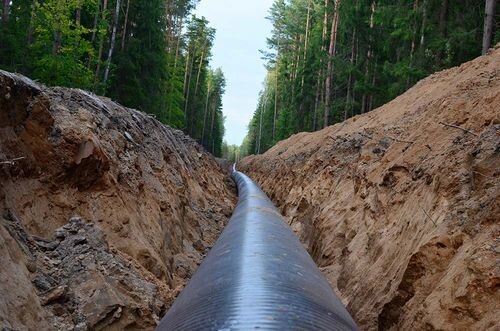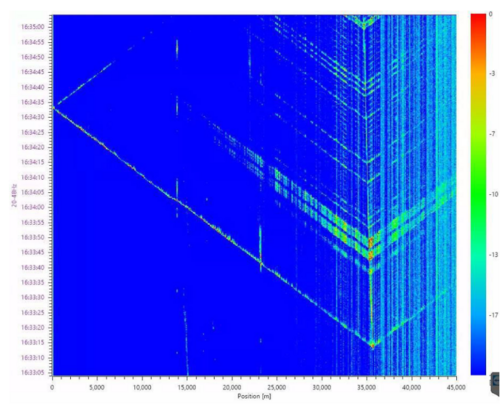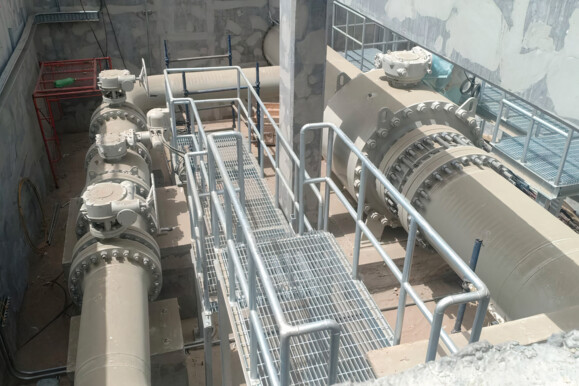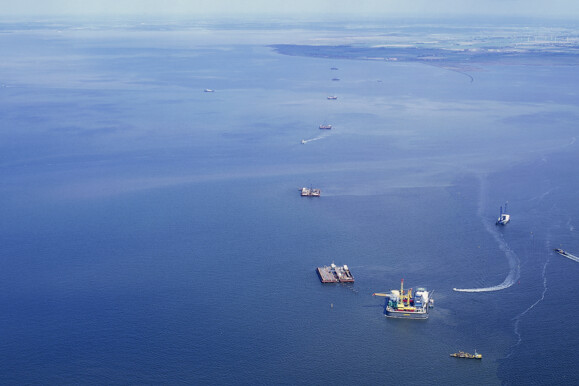The following excerpt is taken from the World Pipelines June 2022 edition. In the article, AP Sensing’s Dr. Alex de Joode, Head of Pipelines & Terminals Business unit as well as the Chairman of the Technical Committee of the Fiber Optic Sensing Association (FOSA), discusses the applicability of distributed fiber optic sensing-based pipeline leak detection software under API 1130 and API 1175.
The 2022 revisions of API 1175 (Pipeline Leak Detection – Program Management) and API 1130 (Computational Pipeline Monitoring for Liquids) included many essential updates. The current state-of-the art pipeline leak detection methods were reviewed, including the contribution of distributed fiber optic sensing (DFOS) technologies.
DFOS-based pipeline leak detection and location software (DFOS-PLDS) is possibly the most important technological development in pipeline leak detection in recent years. Despite being a relatively new technology, DFOS-PLDS is already applied to an extensive number of pipelines covering a wide variety of pipeline conditions. DFOS-PLDS’s fast adoption is a testimony to the benefits it can provide. Despite not prescribing specific pipeline LDS methods, Pipeline and Hazardous Materials Safety Administration (PHMSA) recently listed ‘fiber optic-based distributed sensing’ as a type of continuous pipeline monitoring in a November 2021 ruling.
DFOS is a technology that can transform fiber optic cables into sensing cables, enabling close monitoring of long assets such as pipelines, power cables, roads, tunnels, or rail lines. DFOS-PLDS uses the measurements from one or more DFOS interrogators. DFOS-PLDS algorithms confirm detection and calculate the location of leaks, avoiding false positives. Associated software can also provide temperature measurements, third party intrusion (TPI) monitoring, or pig tracking.
Several different technologies are encompassed by “fiber optic sensing”, with Distributed Temperature Sensing (DTS) and Distributed Acoustic Sensing (DAS) being the two most used DFOS technologies for pipeline leak detection. Both DTS and DAS can be implemented on their own or in combination.
DFOS-PLDS and 2022 Edition of API 1130
Negative pressure wave (NPW) LDS based on DFOS (DAS in particular) has been used for some time now and can provide significant improvements over pressure meter based NPW CPM (computational pipeline monitoring). Similarly, acoustic LDS software based on distributed sensing represents a significant improvement on a CPM based on an array of single-point sensors.
The 2022 edition of API 1130 no longer limits the type of sensor used for NPW/acoustic CPM. The new text removed the implicit requirement for the sole use of pressure meters to detect negative pressure waves and acoustic signals.
Instead, the new text refers more generally to ‘sensors capable of detecting’ such signals. The new text also clarifies that the previous NPW/acoustic CPM are two different LDS methods based on the detection of two different physical phenomena. NPW and acoustic CPMs are now defined in Annex B as two separate CPMs (B5—negative pressure wave CPM; and B6—Acoustic CPM).
DAS-Based Negative Pressure Wave CPM
NPWs are rarefaction waves generated during the onset of the leak. NPWs propagate in the fluid at the speed of sound in both directions away from the leak origin. NPW CPM software has historically relied on instrumenting multiple locations with two pressure meters to determine the timing and direction of the propagation of such waves. In the case of DAS-based NPW CPM, the information provided by the fiber optic cable is used to determine NPW origin and observe the 2 NPWs travelling many kilometers away from the leak position (see Figure 1).
DAS-based NPW CPM brings several benefits for the sensing of NPWs:
Resilience to Obstacles to the NPWs Path
Point sensors are normally installed many kilometers apart, and NPW propagation can be interfered with or stopped entirely by these obstacles. Pressure-regulating valves, pigs, slack-flow vapor pockets, changes in diameter, booster stations, manifolds and other factors can interfere with or prevent the arrival of an NPW to a remote pressure sensor. DFOS ensures sensitivity along the pipeline.
Pressure Wave Attenuation
Pressure wave attenuation is a limiting factor that restricts the maximum distance to a remote sensor. Distributed sensing delivers sensors at closer proximity to the leak origin and therefore provides greater sensitivity even with DAS interrogators placed 100 km apart.
Event Duration and Confirmation
DAS can monitor not only the onset of NPWs, but also the progress of the NPWs as they travel over many kilometers. NPW monitoring time using DAS is therefore much longer than using point sensors, clearly showing travel direction and point of origin (see Figure 1 below).
DAS-Based Acoustic CPM
The continuous flow through the leak orifice generates acoustic signals inside and outside the pipe and produces pressure instabilities within the fluid. Acoustic CPM has historically been based on special transducers capable of capturing the frequencies produced by the leak event. These acoustic signals are present throughout the duration of the leak, not only at the onset but are weaker than signals from NPWs and attenuate faster. The proximity of the DFOS sensor cable provides a much greater probability of detecting acoustic leak signals than sensors placed kilometers apart. DAS-based PLDS are used to identify the acoustic signals and general signal behavior to classify leaks and avoid false positives.
DFOS Technologies and API 1175
The API 1175 Recommended Practice (Pipeline Leak Detection—Program Management) addresses many PLDS program components. The 2022 edition discusses the main LDS methods, selection process methodology, and their applicability within the LDS program, among other program elements.
DFOS-PLDS can support the Pipeline Leak Detection Program as Primary LDS, Complementary LDS, or Alternative LDS (in case the Primary LDS is not in service). DFOS-PLDS could also be present as a Redundant LDS, provided it has the same functions as the Primary LDS.
Primary LDS
The pipeline operator may define different Primary LDS for specific operational conditions, like startups, shut-in or slack flow.
An API 1130 CPM technique is typically the Primary LDS; however, an externally based LDS may be deemed more appropriate in some instances. The 2022 revision of API 1175 incorporates an example of the external LDS performance table format.
DFOS-PLDS can be considered part of an API 1130 (NPW and Acoustic CPM). It can also be the Primary LDS as an external LDS, typically using DTS or distributed temperature gradient sensing (DTGS).
DTS and DTGS are often considered Primary LDS for pipeline applications where leak events generate a fast and strong thermal effect. In these cases, and especially for small diameter pipes, the DTS/DTGS based PLDS software alarms are easy to understand. They can provide a very sensitive, reliable method with unparalleled performance. In certain applications, DTS/DTGS monitoring solutions can be engineered to provide fast alarm response with the accurate temperature and location readings required from a primary LDS.
Complementary LDS
DFOS-PLDS can be one component of a multi-LDS system to assist the Primary LDS. Industry recommended practices state that a combination of leak detection methods should be considered to improve the leak size detection threshold, reduce the time to detect a leak, and/or define the leak location more accurately.
Some factors to consider in selecting a Complementary LDS:
- DFOS can provide the leak location to within a few meters, and an accurate leak location can reduce confirmation and response time.
- Leak confirmation from a fundamentally different LDS technique may increase the operator’s confidence to take action, further reducing response time. DFOS will not share the same sources of false positives like field measurement inputs, calibration errors and flow imbalances due hydraulic transients.
- Small leak rates, if left undetected, can lead to large leak volumes, requiring periodical leak survey methods to be detected. PLDS during shut-in can in principle, detect small leak rates in liquids, but pressure based systems might not locate the leak position during shut-in if the leak started during flow.
- Slow-release, growing leaks may not generate NPWs.
DFOS-PLDS is in most cases the ideal Complementary Continuous LDS and can also be considered to replace some non-continuous LDS methods used to detect seeping leaks. Table 1 shows where DFOS-PLDS can be used for different leak rates.
Redundant LDS
DFOS-PLDS can be designated as a Redundant LDS, i.e., it has the same function as the Primary or Complementary LDS. In case of failure, the Redundant PLDS runs in parallel or takes over automatically.
In addition to duplicated systems, some LDS method combinations using DFOS-PLDS could be considered redundant:
- DFOS-PLDS based on DTS and DTGS, when used together, could be considered a redundant configuration.
- Pressure based NPW CPM and DFOS based NPW CPM.
DFOS-PLDS Technologies
The main DFOS-PLDS technologies can be grouped according to thermal, acoustic and pressure wave detection capabilities.
Detection of thermal signals include:
Raman & Brillouin Distributed Temperature Sensing (DTS) measures accurate temperature values and temperature variation. The DFOS-PLDS based on DTS will alarm based on temperature values or significant temperature variations in the environment outside the pipe. The DFOS-PLDS will apply algorithms and numerical techniques to analyze if the temperature and temperature variations are consistent with a leak and not caused by normal environmental variations or by the pipeline thermal transients.
Distributed Temperature Gradient Sensing (DTGS) – part of DAS. DTGS measures temperature variations very quickly over finite time spans. The DFOS-PLDS based on DTGS will alarm based on significant temperature variations in the environment outside the pipe. The DFOS-PLDS will apply algorithms and numerical techniques to analyze if the temperature variations is consistent with a leak and not part of normal variations.
Detection of acoustic and pressure wave signals include:
Distributed Acoustic Sensing (DAS) uses analysis of backscattered light to sense minute dynamic changes in fiber length caused by vibrations, sound waves, pressure pulses, and temperature variations. DAS providers use different DFOS-PLDS software to analyze and classify these transient signals to determine whether these signals are compatible with NPWs propagation due to leak events, or caused by background noise.
Conclusion
The benefits of DFOS-PLDS should be considered either as part of API 1130 or as part of API 1175 External PLDS. DFOS-PLDS can be used to fulfill various roles within API 1175 (Primary, Complementary, Alternative or Redundant) LDS.






